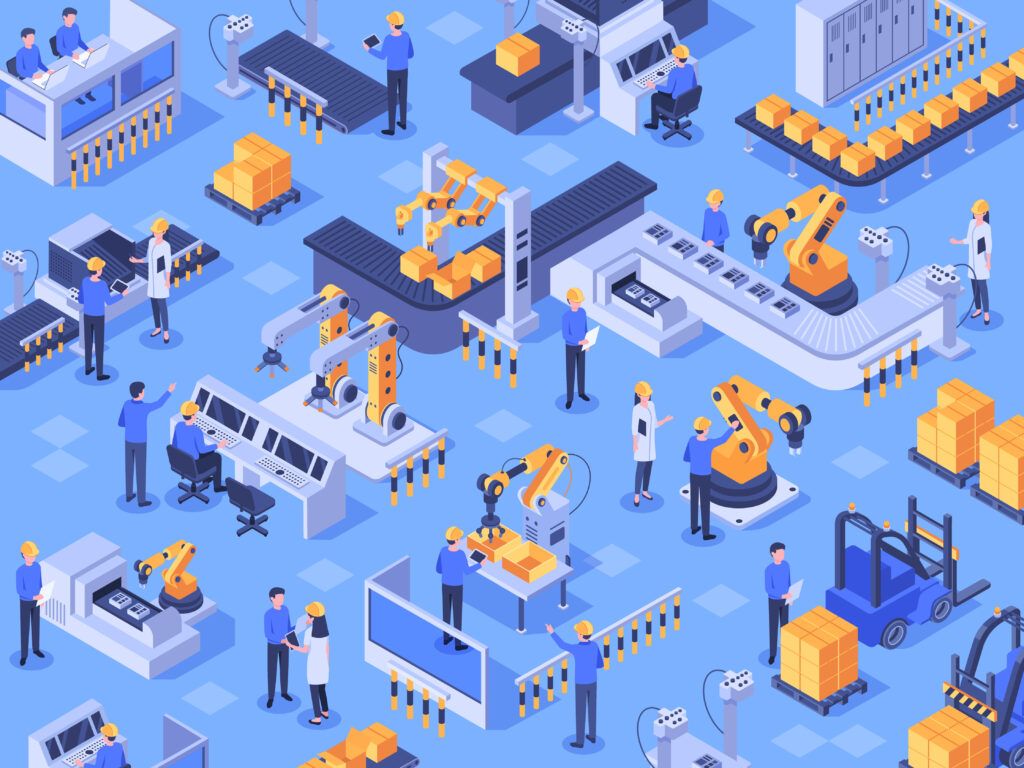Manufacturing environments present unique challenges for network and security operations teams. Unlike traditional office networks, industrial networks must support real-time operational technology (OT), maintain strict uptime requirements, and bridge the gap between legacy systems and modern digital infrastructure. For NetOps and SecOps teams in manufacturing, this complexity demands more sophisticated visibility and control than standard network monitoring can provide.
The Manufacturing Network Reality
Manufacturing networks are hybrid beasts by necessity. They must seamlessly integrate:
- Legacy industrial control systems that weren’t designed with modern security in mind
- Real-time operational technology requiring microsecond precision
- Enterprise IT systems supporting business operations
- Increasingly connected IoT devices across the factory floor
- Cloud-based analytics and monitoring platforms
This convergence creates blind spots that traditional monitoring tools simply can’t address. When a production line goes down or a security incident occurs, teams need the ability to rewind time and understand exactly what happened across their entire network infrastructure.
Moving Beyond Surface-Level Firewall Visibility
Most manufacturing organizations rely heavily on firewalls to segment their networks and protect critical systems. However, standard firewall logging only tells part of the story. When investigating an incident or troubleshooting performance issues, teams often find themselves asking:
- What traffic patterns led to this security event?
- Which applications were impacted during the network congestion?
- How did the firewall respond to different types of traffic during the incident?
Flow analysis provides the missing context. By leveraging Network Security Event Logging (NSEL), operations teams gain a comprehensive account of their firewall’s responses to different kinds of traffic—e.g., Create, Update, Delete, and Denied events. This deeper visibility enables teams to fine-tune their firewall policies, ensuring that critical application traffic flows smoothly while genuine threats are blocked.
For manufacturing environments where every minute of downtime can cost thousands of dollars, this level of insight is essential. Teams can quickly identify whether performance issues stem from misconfigured firewall rules, blocked legitimate traffic, or actual security threats.
Dynamic Network Visualization for Complex Topologies
Manufacturing networks often feature complex, redundant topologies designed to ensure continuous operations. When issues arise, network analysts need to quickly understand:
- Which routes are currently active or down
- Where traffic congestion is occurring
- How to leverage redundant paths for better performance
Traditional static network diagrams can’t keep pace with the dynamic nature of these environments. Network visualization tools that provide real-time views of network topology enable faster incident response and more effective capacity planning.
Plixer One’s Flow Hopper feature allows teams to trace traffic paths through redundant network routes. This capability proves invaluable when reconfiguring networks for optimal performance or when troubleshooting connectivity issues that span multiple network segments.
Intelligent Alerting and SIEM Integration
Manufacturing operations teams face a constant challenge: how to maintain security vigilance without being overwhelmed by false positives. Traditional approaches often generate too much noise, causing teams to miss genuine threats among countless benign alerts.
Machine-learning-powered traffic analysis changes this dynamic by:
- Establishing baseline behavior patterns for industrial networks
- Identifying truly anomalous traffic that warrants investigation
- Detecting off-host behavior that might indicate compromised systems
- Reducing alert fatigue through intelligent filtering
Streamlined SIEM Integration
Many manufacturing organizations have invested heavily in SIEM platforms, but these systems can become expensive bottlenecks when fed raw syslog data. Rather than sending the entire kitchen sink of log data to the SIEM, intelligent alerting systems can:
- Pre-filter events based on actual risk and relevance
- Send only high-value alerts that require analyst attention
- Reduce SIEM licensing costs while improving signal-to-noise ratios
- Provide enriched context for security events
This approach allows SecOps teams to focus on genuine threats rather than sorting through endless logs of routine network activity.
Practical Benefits for Manufacturing Teams
The combination of deep network visibility, intelligent alerting, and streamlined workflows delivers concrete benefits for manufacturing operations:
Faster Incident Response: When production systems experience issues, teams can quickly drill down from network-wide views to specific traffic flows, identifying root causes in minutes rather than hours.
Proactive Performance Management: By understanding normal traffic patterns and identifying congestion points, teams can address performance bottlenecks before they impact production.
Enhanced Security Posture: Behavioral analysis and anomaly detection help identify security threats that traditional signature-based approaches might miss, particularly important in environments with aging industrial systems.
Operational Efficiency: Automated alerting and intelligent filtering reduce the time teams spend investigating false positives, allowing them to focus on activities that directly support manufacturing operations.
Compliance and Audit Support: Comprehensive network flow data provides the detailed logs and documentation often required for industrial compliance frameworks.
Concluding Thoughts
Manufacturing networks are much more than simple data pipes. As industrial systems become more connected and cyber threats more sophisticated, NetOps and SecOps teams need visibility and control tools that match the complexity of their environments.
The key is moving beyond reactive monitoring toward proactive network intelligence—understanding not just what is happening on the network, but why it’s happening and what it means for business operations. This shift from data collection to actionable insight represents the next evolution in manufacturing network operations.
To see how this level of insight can help improve your network operations, book a Plixer One demo with one of our engineers.



